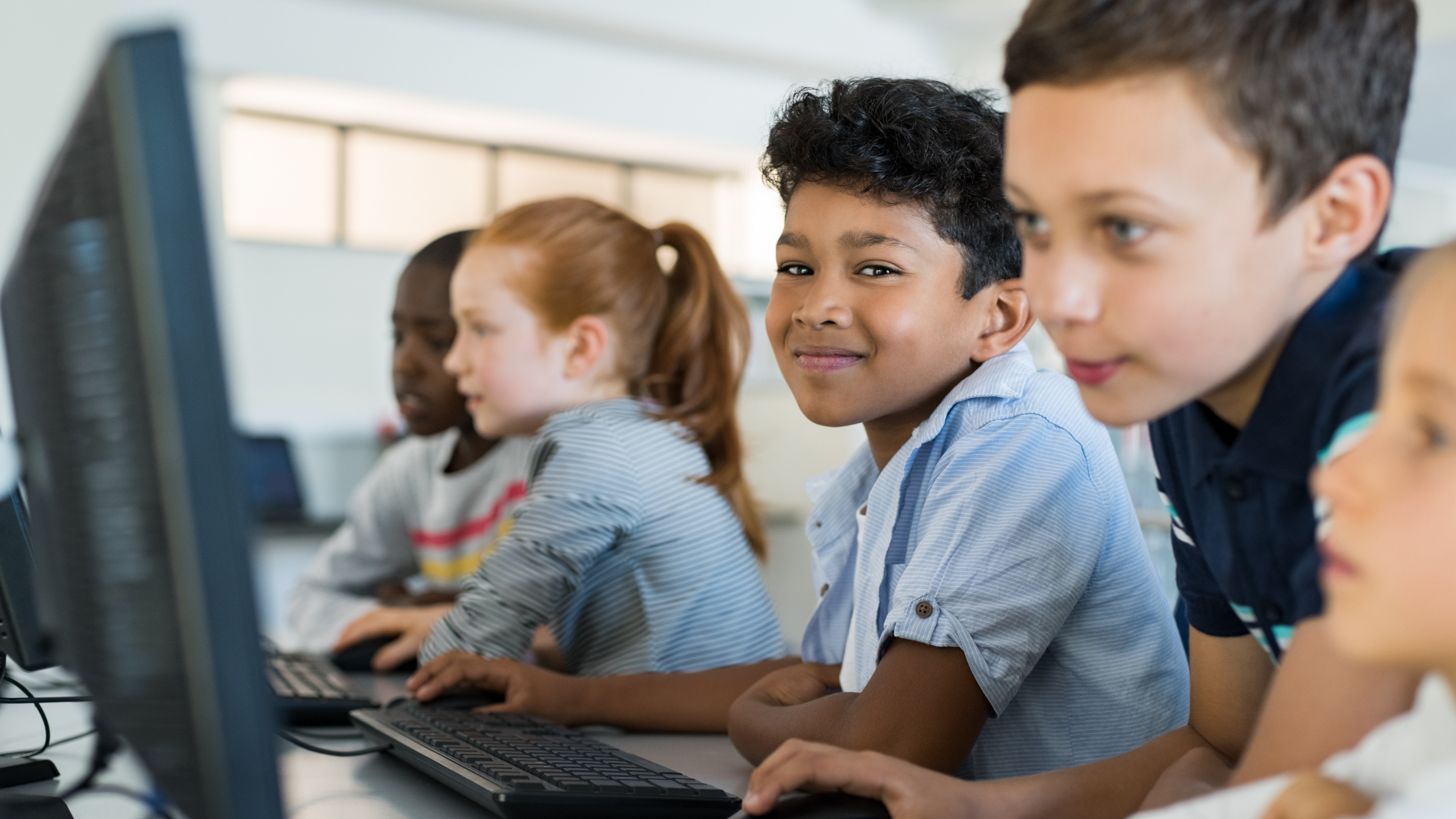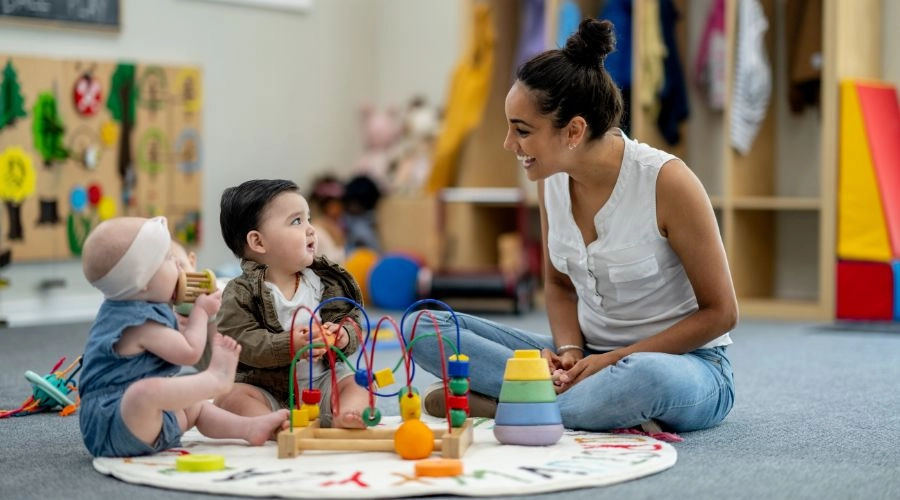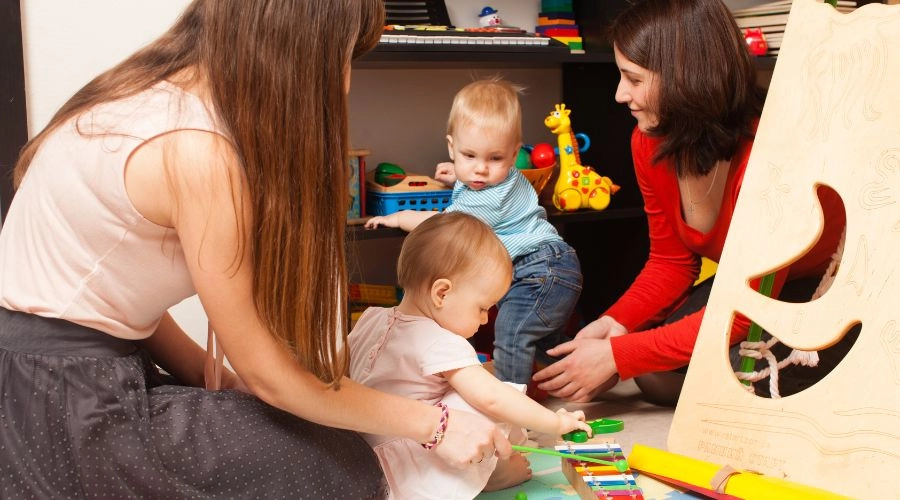Using technology to teach isn’t just a trend—it’s a big idea that can make learning more exciting. Schools are facing new challenges, and using tech in teaching is essential. It’s not just about adding gadgets to class. It’s about using technology smartly to make learning fun and valuable. This helps teachers connect with students and prepare them for a future where technology is everywhere.
Join us at Paramus Preschool. where we’re committed to nurturing the minds and characters of children through our high-quality preschool programs. Serving communities in northern Bergen County, including Ridgewood, Oradell, Emerson, and Paramus, reach out at (201) 500-2951 to discover how we can support your child’s development.
What Does Technology Integration Mean?
Technology integration means smoothly adding technology tools and resources to teaching and learning. It’s not just about using tech because it’s cool, but about improving learning with digital tools.
A good plan for using technology involves teachers working together, planning carefully, and always learning more. It means picking the right gadgets and programs and making fun lessons that use tech in the best way.
Why is Using Technology Important?
In today’s world, technology is part of everything, even education. Using technology in the classroom isn’t just about keeping up with the times—it’s about preparing students for the future. By using technology in teaching and learning, teachers can:
1. Make learning more interesting: Technology can make learning fun with games, videos, and interactive stuff. It makes school more exciting and makes students curious about their learning.
2. Help students work together: Digital tools help students work together efficiently, even if they’re far away. With websites and apps, students can work on projects together and share ideas, which allows them to learn to work in teams.
3. Make learning fit each student: Using technology lets teachers make lessons that fit each student’s needs. With special programs and tools, teachers can give each student the right help, depending on how they learn best.
4. Teach critical skills: In today’s world, students need to learn things like using computers, solving problems, and being creative. Technology helps them improve at these things, whether by learning to code or making videos.
What Makes Technology Integration Work?
To use technology well, teachers need to:
1. Plan carefully: Teachers need to think about what students need, what tech tools they have, and how to teach best with them.
2. Keep learning: Teachers should keep learning how to use tech in teaching, not just the gadgets but also the best ways to teach with them.
3. Focus on students: Using technology to help students explore, create, and learn independently is essential. Teachers should encourage students to take charge of their learning.
4. Keep improving: Teachers should always check how healthy technology is helping students learn and make changes if needed.
Using Technology in Early Education
Some daycare centers are starting to use technology like educational apps or tablets for young kids to learn basic skills like reading and math. This helps them learn while having fun.
Benefits of Using Technology
Using technology in education offers many benefits that significantly enhance the learning experience for students. Let’s delve deeper into some of these advantages:
- Increased Engagement and Enjoyment: Incorporating technology into lessons injects an element of excitement and intrigue into the learning process. With interactive simulations, educational games, and multimedia presentations, students are captivated by dynamic content that stimulates their curiosity and fosters a love for learning.
- Facilitates Collaborative Learning: Technology provides platforms and tools that enable students to collaborate seamlessly, regardless of their physical location. Students can collaborate on projects, share ideas, and provide real-time feedback through online discussion forums, collaborative documents, and video conferencing. This collaborative environment enhances their learning outcomes and nurtures essential teamwork and communication skills.
- Personalized Learning Experiences: Technology empowers educators to tailor instruction to meet each student’s unique needs and learning styles. Adaptive learning software and personalized learning platforms analyze individual student data to deliver customized content and instructional resources. By catering to students’ specific strengths, weaknesses, and interests, technology ensures that every learner receives the support they need to succeed.
- Development of Critical Skills: Besides academic knowledge, technology integration in education cultivates essential 21st-century skills vital for success in the modern world. Students engage in coding, problem-solving challenges, digital storytelling, and multimedia creation, honing their critical thinking, creativity, communication, and digital literacy skills. These skills prepare students for academic success and equip them for future careers in an increasingly digital and interconnected global economy.
- Expanded Access to Educational Resources: Technology eliminates barriers to learning by providing students with access to a vast array of educational resources and opportunities. Through online libraries, virtual museums, academic websites, and open educational resources (OER), students can explore diverse subjects, access up-to-date information, and engage with multimedia content that enriches their learning experiences. Moreover, technology enables students to access educational materials anytime, anywhere, breaking down geographical limitations and ensuring equitable access to quality education.
- Enhanced Teacher Efficiency and Effectiveness: Technology empowers educators with tools and resources that streamline administrative tasks, facilitate lesson planning, and provide real-time feedback on student progress. Learning management systems (LMS), educational apps, and digital assessment tools enable teachers to organize course materials, deliver interactive lessons, and assess student learning outcomes efficiently. By automating routine tasks and providing data-driven insights, technology allows teachers to focus more on individualized instruction, student support, and fostering meaningful learning experiences.
Conclusion
Using technology in education isn’t just a trend—it’s essential for preparing students for the future. Teachers can use technology in smart ways to make learning more interesting and valuable. Whether in early education or higher education, technology can change how we learn and teach for the better.






